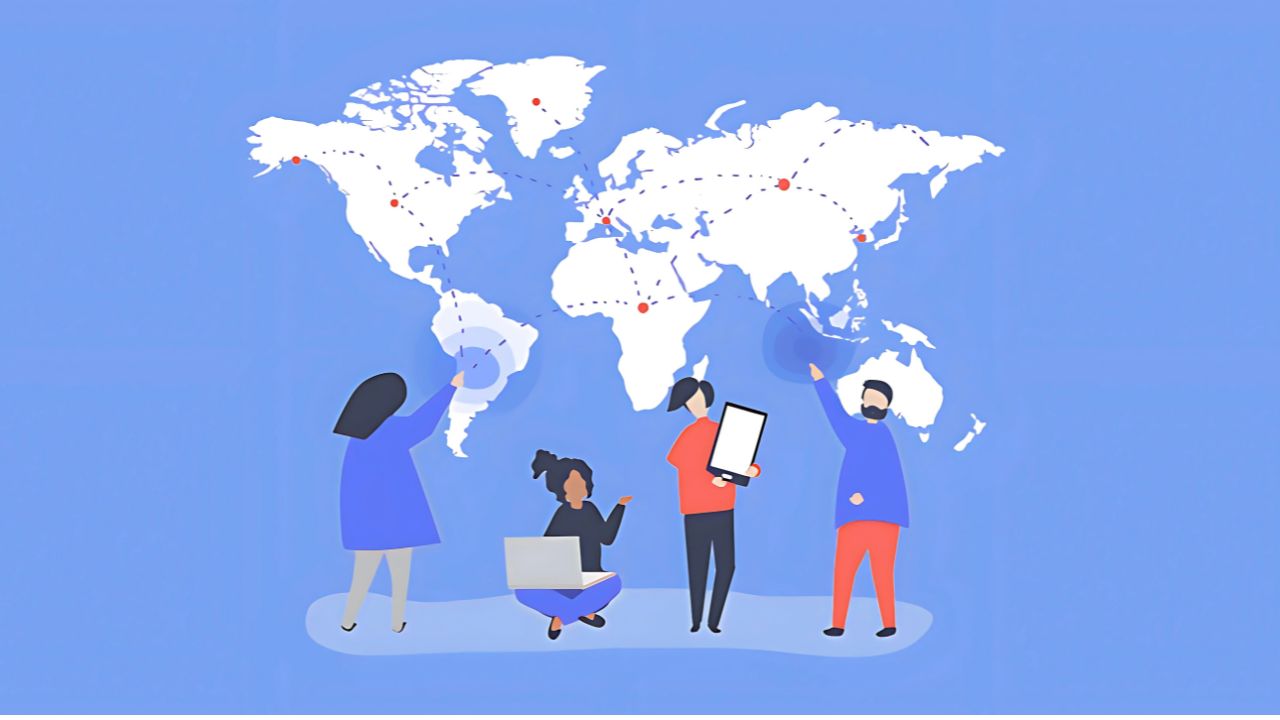I. Introduction: The New Global Buyer
Once upon a time, the lowest price won. Brands slashed costs, streamlined packaging, and out-discounted each other in the race to the bottom. But in today’s global marketplace, that playbook is looking dangerously outdated.
The price tag is no longer the most powerful motivator.
Consumers from Berlin to Bangkok, Brooklyn to Bangalore are making buying decisions based on something far deeper than affordability. They want to know what you stand for. They care about how your product is made, who it benefits, and whether your company is doing more than just chasing profit.
This shift isn’t speculative, it’s seismic. Research shows that a majority of global buyers are more likely to purchase, trust, and even champion brands that lead with purpose. Values are no longer “nice to have” they’re the new bottom line.
In this blog, we’ll unpack this transformation in global consumer behavior. From premium pricing for sustainable goods to the growing demand for transparency, we’ll explore the rise of the purpose-driven buyer and what brands must do to keep up, stand out, and earn long-term loyalty in this new ethical economy.
II. The Rise of Purpose-Driven Buying
The global marketplace is in the middle of a transformation and it’s being driven by something bigger than price points or product features. Today’s consumers are no longer satisfied with transactional relationships. They expect the brands they buy from to stand for something and to stand for it loudly.
This shift isn’t anecdotal. It’s data-backed and global. A sweeping international study found that 94% of consumers say a strong sense of purpose is important when choosing a brand. Even more telling: 83% believe that companies should only earn a profit if they also deliver a positive impact on people and the planet.
Purpose is no longer an optional extra; it’s become a baseline requirement for relevance.
What’s driving this change? A mix of heightened digital awareness, generational influence, and socio-political urgency. Social media has turned every consumer into a watchdog. Gen Z and millennials who now represent a massive share of global spending power are leading with their values. And pressing issues like climate change, inequality, and ethical labor are no longer background noise; they’re front and center in the buying decision.
This is a consumer base that demands clarity. Mission statements and ESG reports aren’t just PR they’re buying criteria. Brands are being judged not just by what they sell, but by why they exist and how consistently they show up for that purpose.
In this new economy, purpose is the differentiator. It builds trust, fuels loyalty, and earns advocacy. The brands that get this right won’t just stand out; they’ll endure.
III. Beyond Budget: The Willingness to Pay for Values
Conventional wisdom says price rules. But in today’s global market, values are becoming just as powerful as value.
Despite inflationary pressures and rising living costs, consumers are proving they’re not just shopping with their wallets, they’re shopping with their consciences. More than 80% of global consumers say they’re willing to pay a premium an average of 9.7% more for products that are sustainable, ethically made, or purpose-aligned.
This isn’t idealism. It’s a recalibration of what people believe a product is worth. Shoppers aren’t simply buying goods they’re buying into the story behind them. A T-shirt made with ethical labor, a coffee brand funding clean water projects, or a beauty product that’s cruelty-free these aren’t luxuries; they’re signals of identity and integrity.
In many ways, consumers are treating purchases like votes. Every dollar spent is an endorsement of the brand’s values, practices, and purpose. If a brand aligns with their worldview, they’ll spend more because the product feels more personal, more responsible, and more right.
This presents a powerful opportunity for businesses: Purpose can justify premium pricing. But only when it’s backed by action, not just slogans. Buyers can spot inauthenticity a mile away and they’re quick to call it out or move on.
In short, price still matters but it no longer wins on its own. Values, when real and resonant, tip the scale.
IV. Authenticity, Not Optics
In the age of purpose, consumers are paying close attention and they’re not just listening, they’re watching. Closely.
Today’s buyers don’t just want to hear that a brand supports sustainability, fairness, or equity they want to see the receipts. Authenticity is everything, and performative gestures are worse than silence. One misstep, one hollow campaign, and the internet won’t hesitate to call you out.
According to global research, nearly two-thirds of consumers say their purchasing decisions are influenced by a company’s values, leadership, and public actions. That means buyers are evaluating far more than product specs. They’re scanning leadership decisions, supplier partnerships, labor policies, environmental efforts and even political stances.
It’s not just about saying the right thing, it’s about being the right thing. The era of “radical transparency” is here, and with it comes a heightened demand for brands to back up their claims with real action. If you say your product is sustainable, consumers want to know: How? Where? By whom? Under what conditions?
This is where brands get it wrong. They confuse branding with belief, messaging with meaning. They treat purpose like a marketing tactic, layering on buzzwords without substance. But in a market this savvy, inauthenticity doesn’t go unnoticed, it gets punished.
Purpose has to be built in, not bolted on. It has to show up across the supply chain, the boardroom, and the customer experience. Anything less feels fake and today’s buyers can smell fake from a mile away.
V. One Purpose Doesn’t Fit All
Purpose may be universal but its definition isn’t.
Across continents, cultures, and communities, what “matters most” varies. That means brands can’t rely on a single message to resonate globally. To connect with purpose-driven buyers, companies need to understand the specific values that drive each market and tailor their strategies accordingly.
In North America and Europe, consumers place heavy emphasis on employee treatment, ethical sourcing, and corporate accountability. Transparency around supply chains, fair labor, and inclusivity are seen as non-negotiable. These buyers are skeptical of vague commitments they want proof, policies, and performance.
In contrast, many consumers in Asia are driven by a blend of practical needs and forward-looking optimism. They gravitate toward brands that are not only ethical but innovative and responsive to real-life challenges whether that means improving quality of life, creating economic opportunity, or embracing tech-enabled sustainability.
The takeaway? Purpose doesn’t scale unless it adapts. A global brand must be able to speak locally without losing its core values. That means doing the work: listening, researching, and understanding the cultural drivers that shape consumer trust in each region.
Get it right, and purpose becomes a bridge not just between product and buyer, but between brand and world.
VI. Purpose Pays Off
Leading with purpose isn’t just about doing the right thing, it’s a proven strategy for doing well.
Brands that embed purpose at the core of their business don’t just earn consumer loyalty they unlock a powerful ripple effect across every stakeholder group. According to recent studies, purpose-led companies experience stronger growth, greater pricing power, and deeper employee engagement, especially among millennials and Gen Z.
These companies aren’t just selling products, they’re building movements. And movements are sticky. Purpose-driven brands are more resilient during economic downturns, enjoy higher retention rates, and generate more organic advocacy from customers and employees alike.
Even investors are paying attention. Firms that prioritize environmental, social, and governance (ESG) metrics once viewed as niche are now viewed as forward-thinking and future-proof. As capital increasingly flows toward sustainable, socially responsible businesses, purpose becomes a competitive advantage in the boardroom as much as the showroom.
This is the virtuous cycle of purpose:
→ Consumers trust and buy from brands that align with their values.
→ Employees feel connected to meaningful missions and stay longer.
→ Retailers prioritize purpose-led products on shelves.
→ Investors bet on the long-term upside of principled companies.
The message is clear: Purpose pays up front, and over time.
VII. Embedding Purpose into Business DNA
Purpose isn’t a tagline. It’s not a seasonal campaign. It’s a long game and it has to live deep inside the business to be believable.
For brands to meet the expectations of today’s global buyers, purpose must be more than a message, it must be a mindset. That means embedding it into how the company operates, how it makes decisions, and how it holds itself accountable.
Start by getting real. Consumers can sniff out opportunism. Purpose has to be grounded in something true and meaningful to the business, something it’s willing to back up with time, money, and leadership attention. If it’s not a priority internally, it won’t resonate externally.
Then, show the impact. It’s not enough to make claims buyers want receipts. Whether it’s reducing emissions, improving worker conditions, or funding local initiatives, brands need to measure, track, and report outcomes. Transparency is the new currency of trust.
Localization matters, too. While your core purpose should stay consistent, how you express it must adapt to each market. In some regions, consumers care more about labor rights; in others, environmental innovation leads. Tailor the message but stay aligned to the mission.
And perhaps most critically: Build a culture around it. Purpose only works when your team believes in it and lives it. When employees understand the “why” behind their work, they become your most powerful ambassadors.
Purpose isn’t a marketing tool. It’s a business strategy. And for brands willing to do the work, it’s one of the most powerful differentiators of the decade.
VIII. Conclusion: The Ethics-Driven Economy Is Here
The global buyer has changed and they’re not going back. Across industries and borders, people are choosing brands not just for what they sell, but for what they stand for. Price still matters, but purpose is now part of the purchase decision. In many cases, it’s the deciding factor.
The numbers are clear. The expectations are loud. And the rewards for brands that embrace this shift are undeniable: stronger loyalty, greater resilience, deeper impact, and long-term relevance.
This isn’t a passing trend or a niche consumer demand. It’s a structural shift in how trust, value, and business success are being redefined. We’re living in the rise of the ethics-driven economy and for companies, the choice is simple:
Lead with purpose. Or fall behind.
Frequently Asked Questions
1. What is a purpose-driven brand?
A purpose-driven brand is a company that operates based on a mission beyond making money, such as sustainability, social impact, or ethical sourcing. These brands build trust by aligning their actions with their values.
2. Do consumers really care about brand values?
Yes. Studies show that over 90% of global consumers expect brands to have a clear purpose, and more than 80% say they prefer buying from companies aligned with their values.
3. Are people willing to pay more for sustainable products?
Absolutely. Consumers are willing to pay nearly 10% more for products that are sustainable, ethically sourced, or socially responsible even during economic downturns.
4. How can a brand communicate purpose authentically?
Authentic brand purpose comes from internal alignment: what you say must match what you do. Communicate transparently, show impact, and avoid vague or performative messaging.
5. Why is purpose important in marketing today?
Purpose builds loyalty, trust, and long-term brand equity. In a crowded market, standing for something meaningful helps brands connect emotionally and competitively with today’s buyers.




